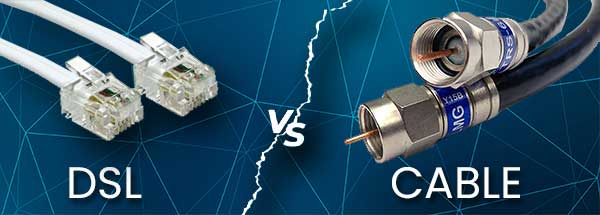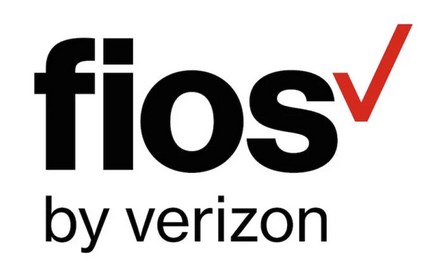Upgrading to a better modem is always a good option if you’re experiencing issues with your current one. If you’ve come across this reading, you’re probably wondering if you should upgrade your Verizon DSL modem or its firmware.
These are two completely different things. A modem upgrade can mean buying a better model, and a firmware upgrade can simply mean updating your firmware to a newer available version. Don’t worry, the firmware updates are automatic. Let’s go deeper into modem upgrades.
CONTENTS
DSL vs Cable Difference

First, to upgrade your modem, you need to understand the difference between cable and DSL internet service providers. The first difference is that they don’t use the same modems. Cable ISPs use cable modems, and DSL providers use DSL modems.
The difference is that they don’t use the same wiring. DSL modems are connected to the ISP with telephone lines, and the cable modem connects to the ISP using coaxial cables. The analog signals in these cables have different frequency ranges.
So, if you’re looking to upgrade your Verizon DSL modem, you need to see which modems are compatible with Verizon DSL.
Verizon FiOS vs Verizon DSL
There’s another thing that should be discussed. Verizon has two different services, Verizon DSL and Verizon FiOS. These are very different according to speed and transmission. So, what’s the difference between these two?
Verizon FiOS

FiOS (Fiber Optic Service) is currently the highest level of broadband technology that we have available to us. It allows data to travel faster because it uses glass and plastic instead of copper. This means that the current highest transmission rate is 1Gbps.
Recommended reading:
- Verizon Fios Router Blinking White (How To Troubleshoot)
- Verizon Fios WAN Light Off: Why And How to Fix It?
- Red Globe On Verizon Router: What It Is & How To Fix It
- ADSL Router Login [A Detailed Guide]
Instead of signals as electricity, they are transmitted as light. This means that it takes much less time to reach the destination. Also, the download and upload speeds are a close match when it comes to fiber optic internet access.
Verizon DSL
Verizon’s DSL (Digital Subscriber Line) is different because it uses telephone lines made of copper for establishing a connection. Because the telephone lines have a limited frequency in which the signals can move, the speed is also limited.
One part of the frequency range needs to be used for upload speed, and the other part of the frequency range needs to be used for download speed. There are two options in DSL:
- Symmetric digital subscriber line: The symmetric digital subscriber line has matching download and upload speeds. It’s usually used by smaller businesses as they provide services and need both speeds to be equal.
- Asymmetric digital subscriber line: The asymmetric digital subscriber line uses a larger part of the frequency range for the download speed and a smaller one for the upload speed. It’s a good choice for home subscribers.
The major disadvantage of DSL is that it’s slower than cable or fiber-optic internet access. However, there’s an advantage of having internet access over telephone lines because it’s available in rural areas as well.
DSL already has a good infrastructure thanks to the telephone lines that are nearly everywhere. Whereas, fiber-optic internet is not that common because the technology is expensive and harder to install.
Upgrading Verizon DSL Modem
Now that you know the difference between these two Verizon services, and if you’re using the latter, we can discuss upgrading your Verizon DSL modem. As mentioned, the firmware updates come automatically.
However, if you wish to upgrade your modem to a better one, you need to consider compatibility. There are modems compatible that Verizon provides, and it might be best to contact them to see what they recommend. Here are some that fit.
Verizon Westell 7500 DSL Modem
The Verizon Westell 7500 DSL modem provides an option for wired and wireless connections. It will provide the speed of your DSL subscription package, and the wireless uses only the 2.4GHz frequency band with speeds up to 54Mbps.
Verizon HSI Gateway
This is probably a better alternative to the previous one. It supports different ADSL (Asymmetric Digital Subscriber Line) standards, and it supports wireless speeds up to 300 Mbps through the 802.11n standard.
Actiontec Verizon Gateway
Actiontec is quite similar to the first one. It supports advanced ADSL standards, but it only works with the 802.11b and 802.11g wireless standards. This means that the fastest wireless speed is going to be 54Mbps.
Can You Use a Different Modem?
You can use different modems from the ones provided by Verizon. Make sure they’re DSL modems and not cable modems. To give you a better idea of what you should look for, we’ve provided a couple of recommendations:
- Netgear DSL gateways: Specifically the Netgear D7000. This is one of the fastest DSL gateways out there. Also, the wireless technology it supports is very good because you have access to 2.4GHz and 5GHz wireless.
- Motorola DSL gateways: If you’re interested in a particular Motorola DSL gateway, we recommend the MD1600. It supports up to 100Mbps, and you’ll get access to 2.4GHz and 5GHz Wi-Fi.
- Linksys DSL gateways: The best thing about Linksys DSL gateways is that all of them support the ADSL2+ standard. Most of them offer both frequency bands for wireless access.
- TP-Link DSL gateways: It’s also a great option because these also support the ADSL2+ standard for digital subscriber lines. So, they all work well with Verizon DSL, and you can consider them when upgrading the modem.
Conclusion
There it is. Upgrade your Verizon DSL modem to a better one by looking for compatibility and functionality. Make sure that you’re looking at DSL modems and not cable ones. If you’re a FiOS subscriber, look for routers compatible with it. It’s also a good option to ask Verizon customer service for a recommendation.

Hey, I’m Jeremy Clifford. I hold a bachelor’s degree in information systems, and I’m a certified network specialist. I worked for several internet providers in LA, San Francisco, Sacramento, and Seattle over the past 21 years.
I worked as a customer service operator, field technician, network engineer, and network specialist. During my career in networking, I’ve come across numerous modems, gateways, routers, and other networking hardware. I’ve installed network equipment, fixed it, designed and administrated networks, etc.
Networking is my passion, and I’m eager to share everything I know with you. On this website, you can read my modem and router reviews, as well as various how-to guides designed to help you solve your network problems. I want to liberate you from the fear that most users feel when they have to deal with modem and router settings.
My favorite free-time activities are gaming, movie-watching, and cooking. I also enjoy fishing, although I’m not good at it. What I’m good at is annoying David when we are fishing together. Apparently, you’re not supposed to talk or laugh while fishing – it scares the fishes.
